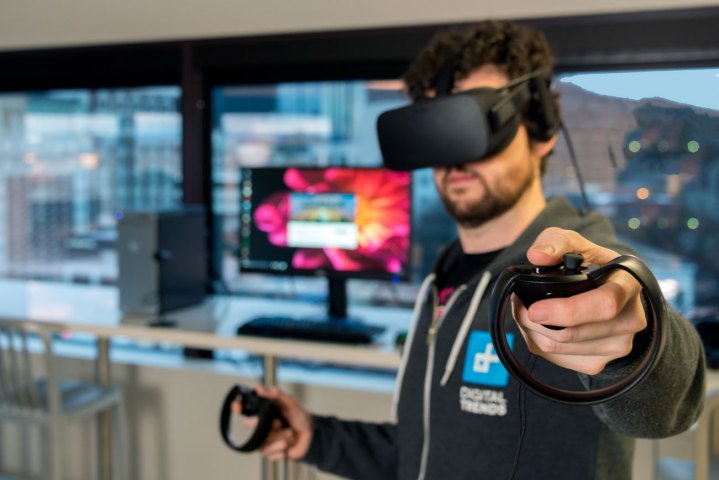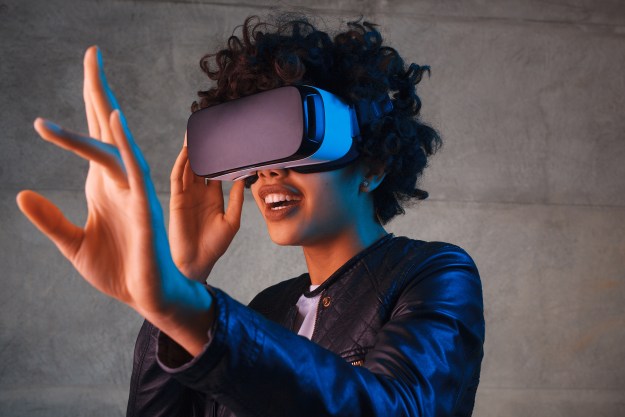
In the post, titled “Oculus Roomscale: Tips for Setting Up a Killer VR Room,” the virtual reality company laid out everything from the basic principles of sensor placement to using 3D-printed wall mounts to house the sensors high up near the ceiling.
For many VR users it’s challenging enough simply to clear enough space in any room to optimize their virtual reality experience. Even with multiple sensors, furniture can get in the way, and people in smaller homes might not be able to put enough distance between themselves and the sensors. The tips that Oculus outlined are for users who don’t have these problems — “enthusiasts” whose set-ups are pretty great to begin with and who want to “push the limits.”
The post went into great detail on the Oculus sensor’s field of vision, which should prove interesting to all Rift owners. It also described what each sensor sees with various configurations of one, two and three sensors, including two sensors side-by-side in front of the user (on their computer desk) and sensors on opposite sides of the room from one another. The more sensors you add, the larger an area in which you can effectively use the Oculus Touch controllers — though using more than three can apparently create “more technical and performance issues than it’s worth.”
The best option, Oculus said, is to mount the sensors high up on your walls, pointing downward into the center of the room.

“We recommend experimenting with your available space and sensor positions to find the best results,” the post said. Granted, all Rift users will still be limited by the length of the cables connecting their headset to their PC, unless they choose to use a cable extender, for which there’s currently no official option.
Further articles set to be published this week will cover USB sensor bandwidth, host controllers, and additional extra equipment, the post promised.
Editors' Recommendations
- If you want a Quest 2, buy one before it gets a big price hike next week
- Best free games on Oculus Quest 2
- This futuristic haptic vest should make virtual reality feel more realistic
- The best Oculus Rift games
- Exercise with friends in FitXR’s virtual, multiplayer workout classes


